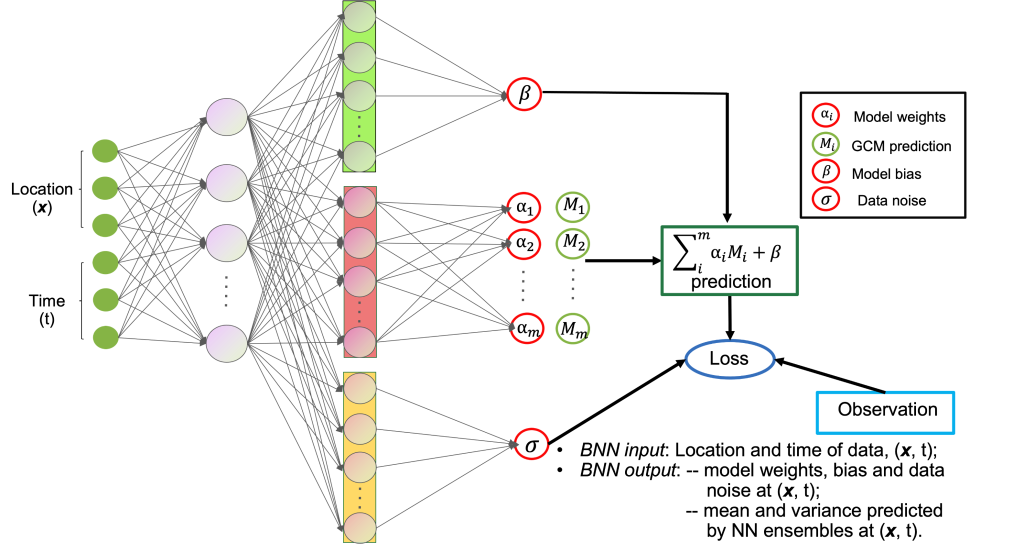
We demonstrated BNN’s superior prediction performance to three state-of-the-art ensemble approaches on six global climate models from CMIP6 for precipitation predictions in U.S. at monthly scale in 1980-2014.
The Science
We proposed a Bayesian Neural Network (BNN) ensemble approach for large-scale, multi-model predictions. BNN reads the data location (x) and time (t) as inputs and estimates the model weights, biases, and data noises at the given (x; t) by calibrating its outputs against observations. As illustrated in Figure 1, BNN first uses a set of dense layers to extract common information of the model weights, biases, and data noises and then designs three sets of dense layers to learn the information specific to each component respectively. Next, BNN incorporates the multiple model predictions and combines them with the calculated model weights, biases, and data noises in the loss function to match the ensemble prediction with the observations.
The Impact
The proposed BNN framework has potential to fundamentally change how current multimodel ensemble predictions are made in the earth system modeling community. BNN leverages each individual model’s spatiotemporal skill and calibrates the multimodel ensemble simulations using observation data for accurate predictions. It also considers extrapolation uncertainty to avoid overconfident projections and ensure robust solutions. Additionally, BNN provides interpretations about which models contribute more to the ensemble prediction at which locations and times to inform the model and data development.




